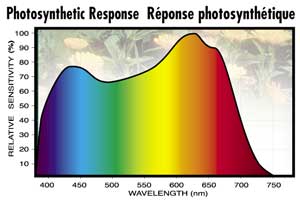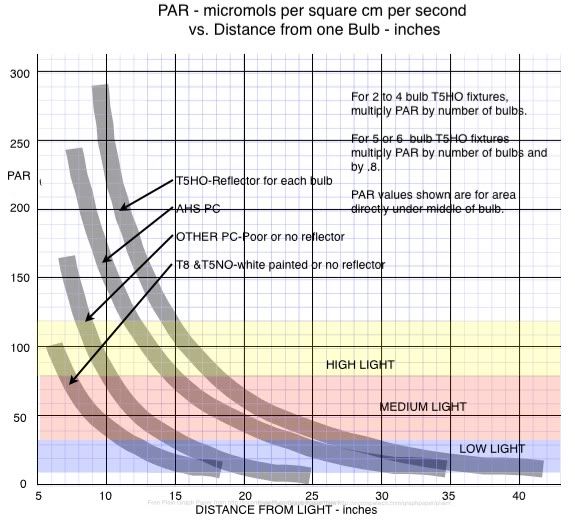visajoe1
Well-Known Member
In the spirit of all this DIY cob stuff I apparently fell into, I became curious what else I could do. Google to the rescue. I found this gem of a post on another forum (non growing forum) by a poster named Hoppy.
Take a gander and let me know what you think. I ordered the lux meter and upgraded photodiode, and a local paint store may have the gel filters i need. If not, I'll order from ebay for $8. I'll keep you posted next week after things arrive and I get it together.
Enjoy
Cheapest PAR Meter DIY
A PAR meter is nice to have, but, for most of us, there is no way to justify paying $350 for one, or even $150. This caused me to design and make a lot of DIY PAR meters that I sold for $50-$60 on the For Sale forum. But, even that is more than many people want to spend for something that is nice to have, but far from essential. Since I am also bored with making those PAR meters, I stopped, and decided to see just how cheaply I can make one that is usable for our planted tank purposes.
Amazon, Ebay, and a few other internet shopping sites sell Lux meters from China, specifically the LX1010B model, which looks like a PAR meter, and does exactly the same thing, but reads out in Lux units instead of PAR units, and is not waterproof, so it can't be dunked in an aquarium. But, it is cheap - as cheap as $13.50 on Ebay, but rarely more than $15, with shipping included in the price. That should be affordable for almost anyone with a planted tank.
The really ghetto way to make one of these Lux meters work as a non-waterproof PAR meter is simply use filters to adjust the sensitivity of the photodiode it uses, so the readout will be the same as a PAR meter.

This is the LX1010B Lux Meter (Don't even think of using the ones that are red, and that have the most listings on Ebay - I have not been able to make one of them work for this.)
If you remove the two screws on the back of the sensor module, you get this:
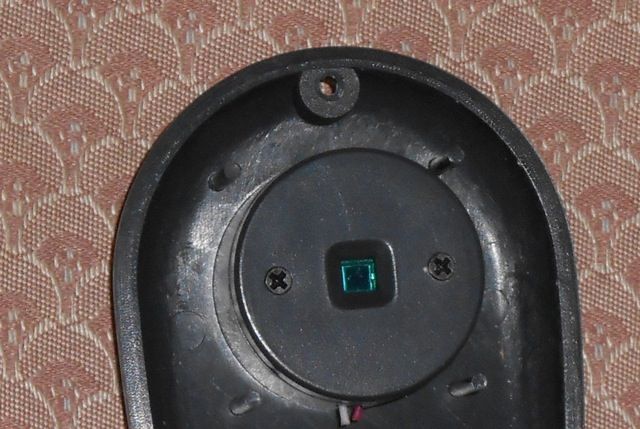
The little green glass square is the built-in filter that makes the photodiode read out in Lux units. The spectral response of this diode/filter combination is essentially green light, around 550 nm wave length. The numbers it gives on the read-out module are about 60-80 times as much as the equivalent PAR numbers. To shift the spectral response a bit away from green and make it a little bit wider in response you can use Rosco gel filters: http://www.rosco.com/filters/roscolux.cfm If you have a local dealer for Rosco filters you can get a free sample book of almost all of their filters, in roughly 1 1/2" x 3 1/4" pieces. Or, you can often buy a sample book on Ebay at a reasonable price. Using a Rosco #4730 Magenta and a #98 Grey, taped over the opening to the photodiode, makes the readings very close to those a PAR meter would give.

The spectral response of this "ghetto PAR meter" is:

The green curve is the basic Lux Meter response, and the pink line is the response with the filters. You can see this doesn't even come close to matching the response of the Apogee Quantum PAR meter, the black curve, but, as long as you use it just for typical fluorescent or LED aquarium lights, it is reasonably accurate. It reads "PAR" with the range selector on the meter read-out set at the middle, 20,000 range.
The calibration of the meter, compared to a Quantum meter is:

There is no way to improve the spectral response if the original photodiode is used, but that little diode is almost identical to an easy to obtain Excelitas VTB8441BH photodiode.
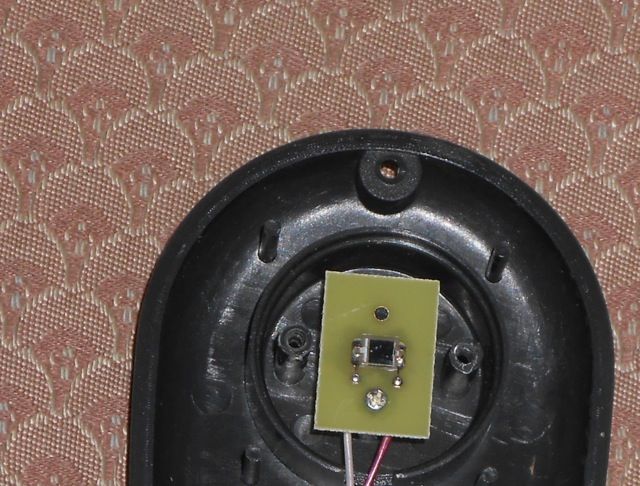
Remove the two screws that hold the green filter and cap on the sensor, and you see this. Remove the one screw holding the diode circuit board and you get this:
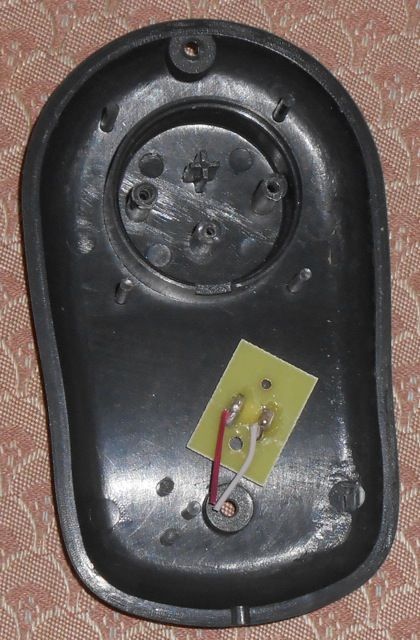
The Excelitas diode has the same lead spacing and size, so you can remove the original diode, melting the solder and/or cutting the leads next to the board, and prying it out. Now, you can put the Excelitas diode in its place and solder the cable wires to the leads - red wire to the side marked with a "+" on top of the diode.
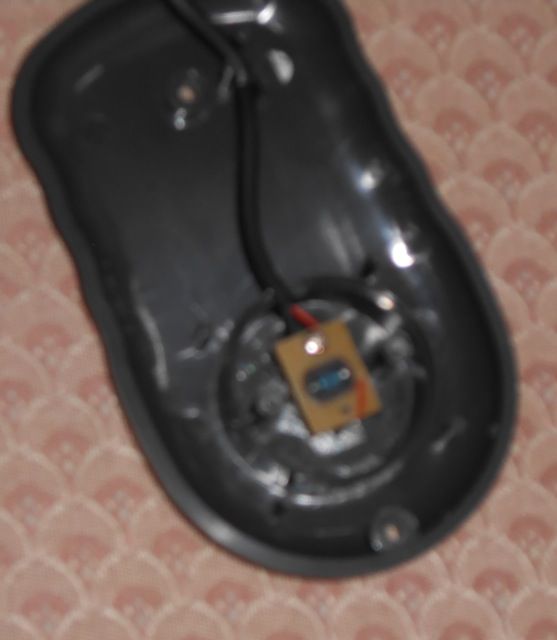
Now, you have a "Lux" meter with a diode having a wider spectral response, which can be modified with filters to make it come closer to the Quantum PAR meter response.

After hours of calculations and testing I found this combination works very well:
2 - Rosco #4815 Pink
1 - Rosco #4930 Lavender
3 - Rosco #102 Diffuser
1 - Rosco #111 Diffuser
That is the combination giving the spectral response shown above.
Take a gander and let me know what you think. I ordered the lux meter and upgraded photodiode, and a local paint store may have the gel filters i need. If not, I'll order from ebay for $8. I'll keep you posted next week after things arrive and I get it together.
Enjoy

Cheapest PAR Meter DIY
A PAR meter is nice to have, but, for most of us, there is no way to justify paying $350 for one, or even $150. This caused me to design and make a lot of DIY PAR meters that I sold for $50-$60 on the For Sale forum. But, even that is more than many people want to spend for something that is nice to have, but far from essential. Since I am also bored with making those PAR meters, I stopped, and decided to see just how cheaply I can make one that is usable for our planted tank purposes.
Amazon, Ebay, and a few other internet shopping sites sell Lux meters from China, specifically the LX1010B model, which looks like a PAR meter, and does exactly the same thing, but reads out in Lux units instead of PAR units, and is not waterproof, so it can't be dunked in an aquarium. But, it is cheap - as cheap as $13.50 on Ebay, but rarely more than $15, with shipping included in the price. That should be affordable for almost anyone with a planted tank.
The really ghetto way to make one of these Lux meters work as a non-waterproof PAR meter is simply use filters to adjust the sensitivity of the photodiode it uses, so the readout will be the same as a PAR meter.

This is the LX1010B Lux Meter (Don't even think of using the ones that are red, and that have the most listings on Ebay - I have not been able to make one of them work for this.)
If you remove the two screws on the back of the sensor module, you get this:

The little green glass square is the built-in filter that makes the photodiode read out in Lux units. The spectral response of this diode/filter combination is essentially green light, around 550 nm wave length. The numbers it gives on the read-out module are about 60-80 times as much as the equivalent PAR numbers. To shift the spectral response a bit away from green and make it a little bit wider in response you can use Rosco gel filters: http://www.rosco.com/filters/roscolux.cfm If you have a local dealer for Rosco filters you can get a free sample book of almost all of their filters, in roughly 1 1/2" x 3 1/4" pieces. Or, you can often buy a sample book on Ebay at a reasonable price. Using a Rosco #4730 Magenta and a #98 Grey, taped over the opening to the photodiode, makes the readings very close to those a PAR meter would give.

The spectral response of this "ghetto PAR meter" is:

The green curve is the basic Lux Meter response, and the pink line is the response with the filters. You can see this doesn't even come close to matching the response of the Apogee Quantum PAR meter, the black curve, but, as long as you use it just for typical fluorescent or LED aquarium lights, it is reasonably accurate. It reads "PAR" with the range selector on the meter read-out set at the middle, 20,000 range.
The calibration of the meter, compared to a Quantum meter is:

There is no way to improve the spectral response if the original photodiode is used, but that little diode is almost identical to an easy to obtain Excelitas VTB8441BH photodiode.

Remove the two screws that hold the green filter and cap on the sensor, and you see this. Remove the one screw holding the diode circuit board and you get this:

The Excelitas diode has the same lead spacing and size, so you can remove the original diode, melting the solder and/or cutting the leads next to the board, and prying it out. Now, you can put the Excelitas diode in its place and solder the cable wires to the leads - red wire to the side marked with a "+" on top of the diode.

Now, you have a "Lux" meter with a diode having a wider spectral response, which can be modified with filters to make it come closer to the Quantum PAR meter response.

After hours of calculations and testing I found this combination works very well:
2 - Rosco #4815 Pink
1 - Rosco #4930 Lavender
3 - Rosco #102 Diffuser
1 - Rosco #111 Diffuser
That is the combination giving the spectral response shown above.

